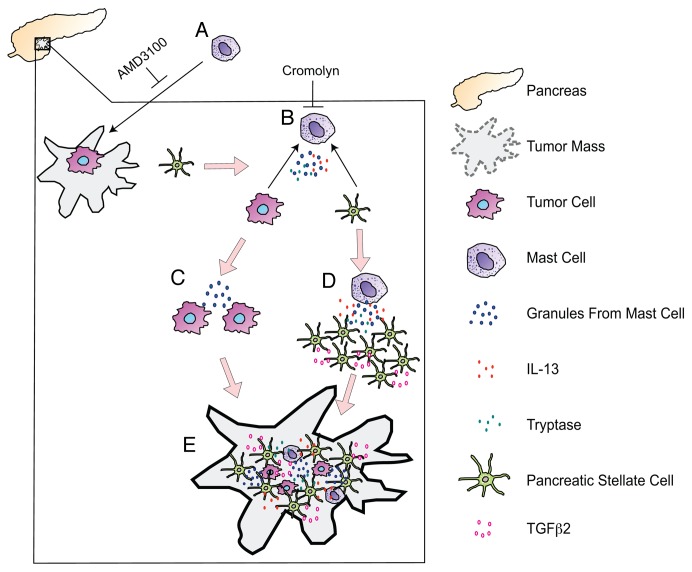Figure 1. Interactions between mast cells, pancreatic stellate cells, and malignant cells promote the desmoplastic pancreatic cancer microenvironment. (A) Pancreatic cancer cells promote the recruitment of mast cells to neoplastic lesions, which can be blocked by interfering with the chemokine (C-X-C motif) receptor 4 (CXCR4) signaling axis. (B) Malignant cells and pancreatic stellate cells (PSCs) stimulate mast cell activation, which can be prevented by the mast cell stabilizer cromolyn. (C) Activated mast cells support tumor growth. (D) Upon activation, mast cell-derived cytokines such as interleukin-13 (IL-13) and tryptase promote PSCs to proliferate and secrete transforming growth factor β2 (TGFβ2). In (C and D), a feedforward loop that may serve to accelerate the effects of mast cells on the tumor microenvironment is depicted. (E) We suggest that tumor-infiltrating mast cells, by promoting the proliferation of both malignant cells and PSCs, favor the progression of pancreatic cancer and contribute to its desmoplastic microenvironment.

An official website of the United States government
Here's how you know
Official websites use .gov
A
.gov website belongs to an official
government organization in the United States.
Secure .gov websites use HTTPS
A lock (
) or https:// means you've safely
connected to the .gov website. Share sensitive
information only on official, secure websites.
